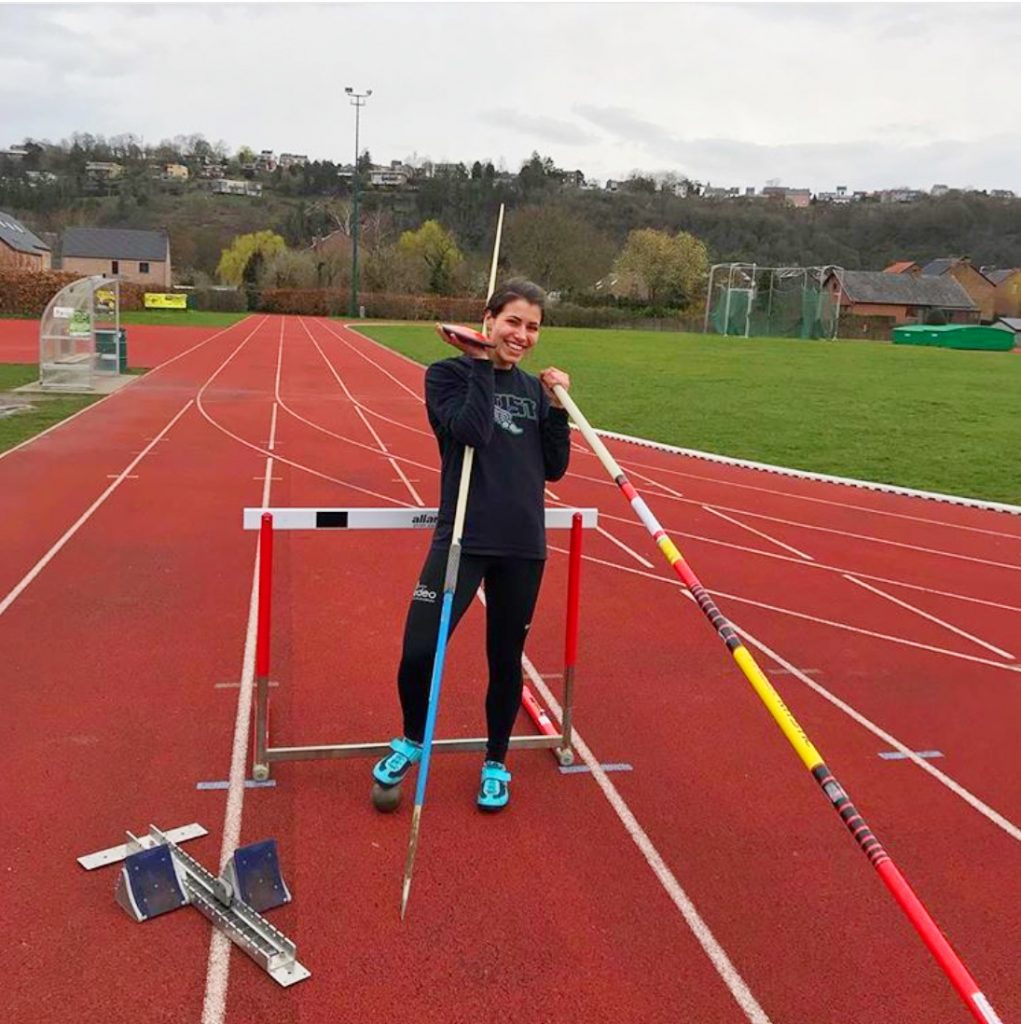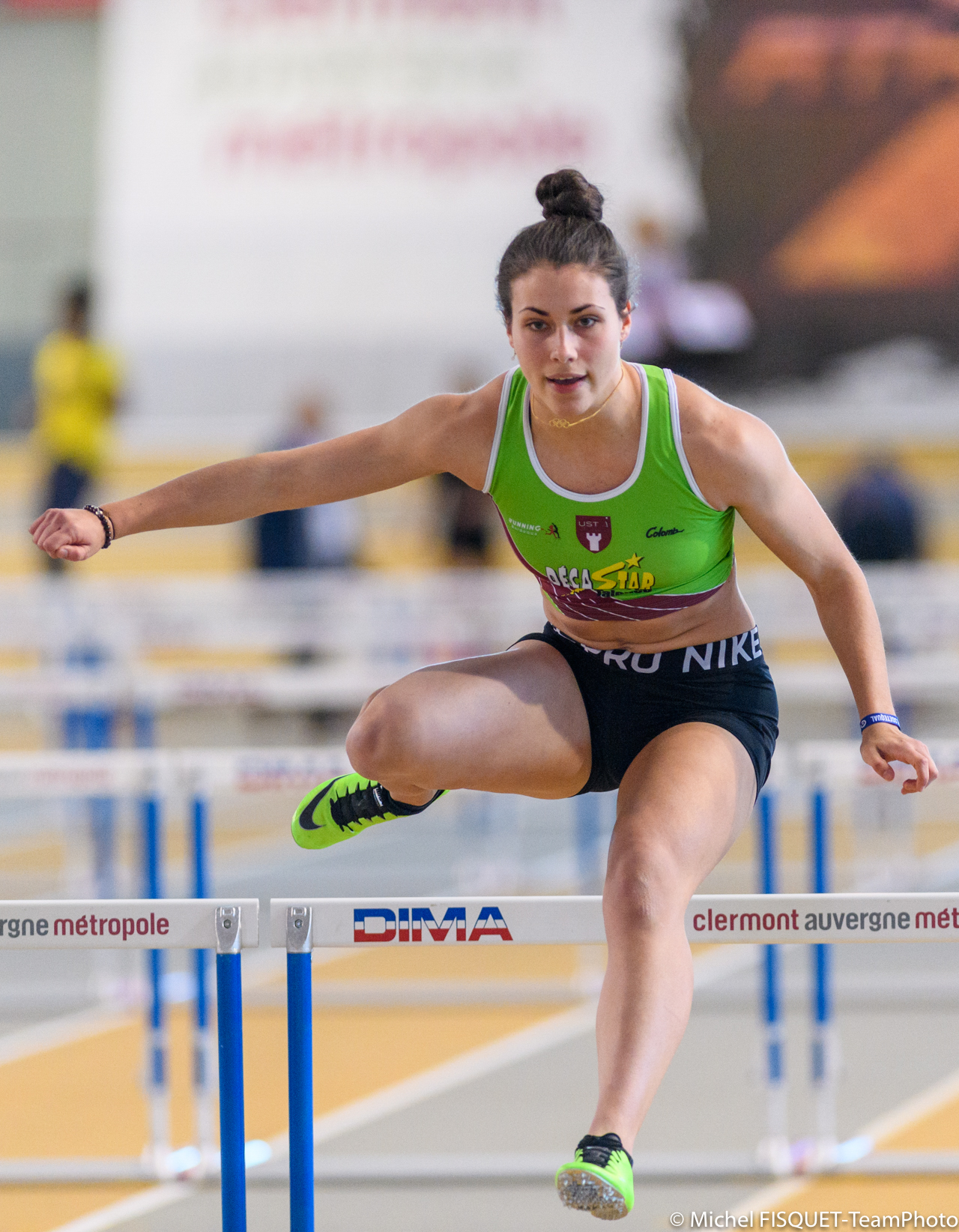Debate on the shape of combined events for men and women appears every so often, usually when something happens in order to provoke that debate. Just over a year ago, in June 2019, Jordan Gray broke the 19-year old US decathlon record, shining a light again on the asymmetry of the paths laid out for men and women in combined events. Jordan’s perspective is one of a decathlete approaching the peak of her career in a world designed for heptathletes. Other perspectives exist, largely coming from a good place and influenced by the rich history of heptathlon, personal impact and a love of the seven-discipline event.
But there is one perspective on this issue that matters more than any other. More than the views of fans, governing bodies and perhaps even those athletes who are currently competing. And that’s the perspective of a young female athlete starting out in the multi-events. Put yourself in the shoes of a teenage girl, dreaming about a track and field career ahead of you and constraining those dreams before you even start. Ushered away from an event reserved for boys and denied the opportunity to compete and progress in decathlon.
Eighteen-year old Cassandre Evans is one such athlete. But she is no dreamer, simply going with the flow, and has no intention of shrugging her shoulders and accepting the status quo. Cassandre is a leader and showing the way among her peers in making the case for decathlon for women.
Cassandre, who competes for Huy Athletic Club, captured international attention when she competed in a decathlon in Belgium in September last year. She won the competition and with her score of 6577 she broke the Belgian decathlon record of 6020 which had remained untouched since 2010.

“How inspiring it was to see the great performance by Jordan Gray!” Cassandre said at the time.
“I was expecting a lot from my first decathlon, because I knew I was able to have an impact on the event and prove that women can do decathlon too. I entered the U20 category in the 2019-20 season, so I was able to participate in the only women’s decathlon in Belgium. My main goal was the Belgian senior record, which was also set by an U20 girl nine years ago.”
“We had this chance,” explains Cassandre’s coach Vincent Delcros, “there is a club in Brussels – Schaerbeek – and they have combined events competitions in all categories. And for many years they have included a decathlon for women.”
Prior to her decathlon debut, Cassandre had competed in four heptathlons in 2019. The first was in Schaerbeek in May (5125), the second in Talence in June where she scored a lifetime best of 5191, and the last heptathlon before her decathlon was a win at the Belgian U20 Championships in Brugge (4906). But she also had the opportunity to make another debut, as she joined Noor Vidts and Niels Pittomvils on the Belgian team at the final edition of the European Combined Events Team Championships in July 2019, at the Second League event in Ribeira Brava, Madeira.
“It was my first selection for the national team, and it was a big step. I didn’t know what to expect!” Cassandre says. But she clearly enjoyed it. “Oh yes. It was a great experience.”
With that step on the learning curve banked, it was time to plan for the decathlon. “After three heptathlons,” Cassandre explains, “I spent a few months on specific preparation.”
“We decided not to prepare for the Belgian champs in August” Vincent adds, “but for the decathlon. So, we worked on the pole vault and discus, and the 1500m”.
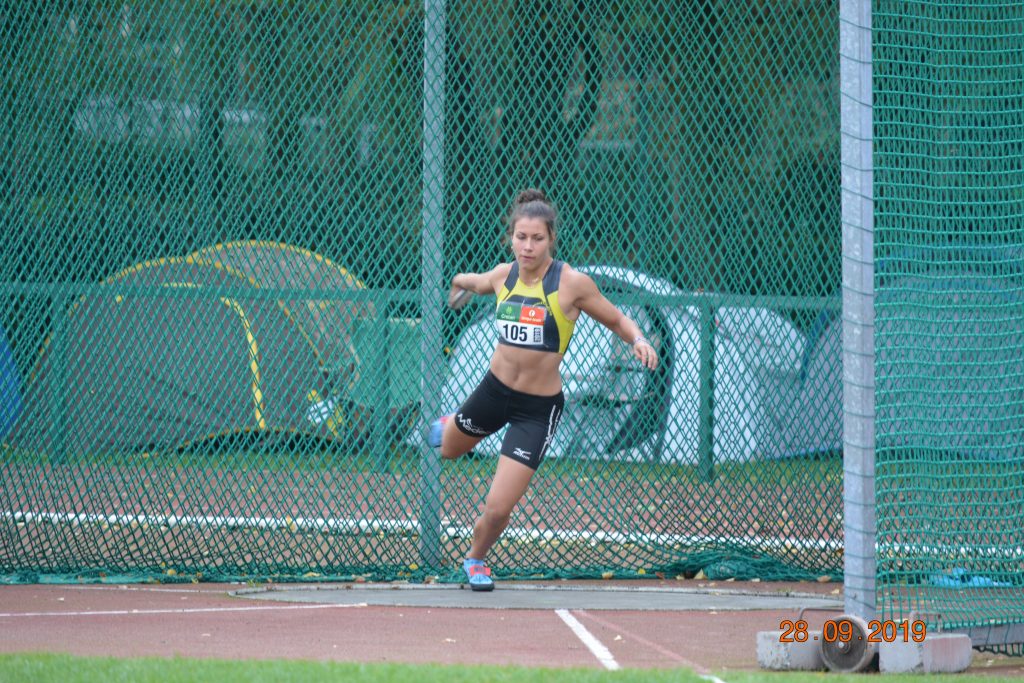
Cassandre’s record breaking score of 6577 consisted of the following marks:
- 100m 12.62
- Long jump 5.49
- Shot 11.92 (PB)
- High jump 1.57
- 400 63.58
- 100h 15.18
- Discus 35.71
- Pole vault 3.00 (PB)
- Javelin 40.62
- 1500 5:56.58 (PB)
But there was another factor to consider. Unlike Jordan Gray’s decathlon, where all the events were in the correct order, Cassandre had to contend with the alternative order used for women’s decathlon, an antiquated convention which requires the women’s field events to adapt around the men’s decathlon schedule. On day 1 she contended the discus, pole vault and javelin and on day 2 the long jump, shot and high jump.
She explains how she approached the event. “As I would during a heptathlon, I focused on each event one by one. I was a little bit uncomfortable with the order – the “women’s one” – but my preparation had focused on that point. Of course, I was more confident with the disciplines which are part of the heptathlon. But I’m also confident with the discus, which I’ve practiced for many years.”
“Pole vault is newer for me, so I was under greater pressure with that. However, the more events I completed the better I felt, despite the cold, rainy and windy weather. With some decent performances and 2 PBs – in the shot and pole vault – the national record was mine during the high jump. So, I was able to run the 1500m without pressure, but with great motivation to reach the world-ranking target I discussed with my coach. With 6577pts, I scored the 2nd U20 performance of all-time.”
“It was a great experience,” Cassandre recalls. “There was a great atmosphere between the girls participating, and I’m already looking forward to do another decathlon.”
Although Cassandre is hoping to compete in the 2020 edition of the Schaerbeek decathlon on 26-27 September, her expectations are modest, given an ankle injury earlier in the year and the challenges of training during the coronavirus lockdown. But she has had the opportunity to compete in 2020, both before and after lockdown. Her first combined event of the year was at the X-Athletics meeting in Clermont Ferrand in January (representing the Talence athletic club) where we met to chat decathlon, ahead of her pentathlon and in between studying for her exams the coming week.
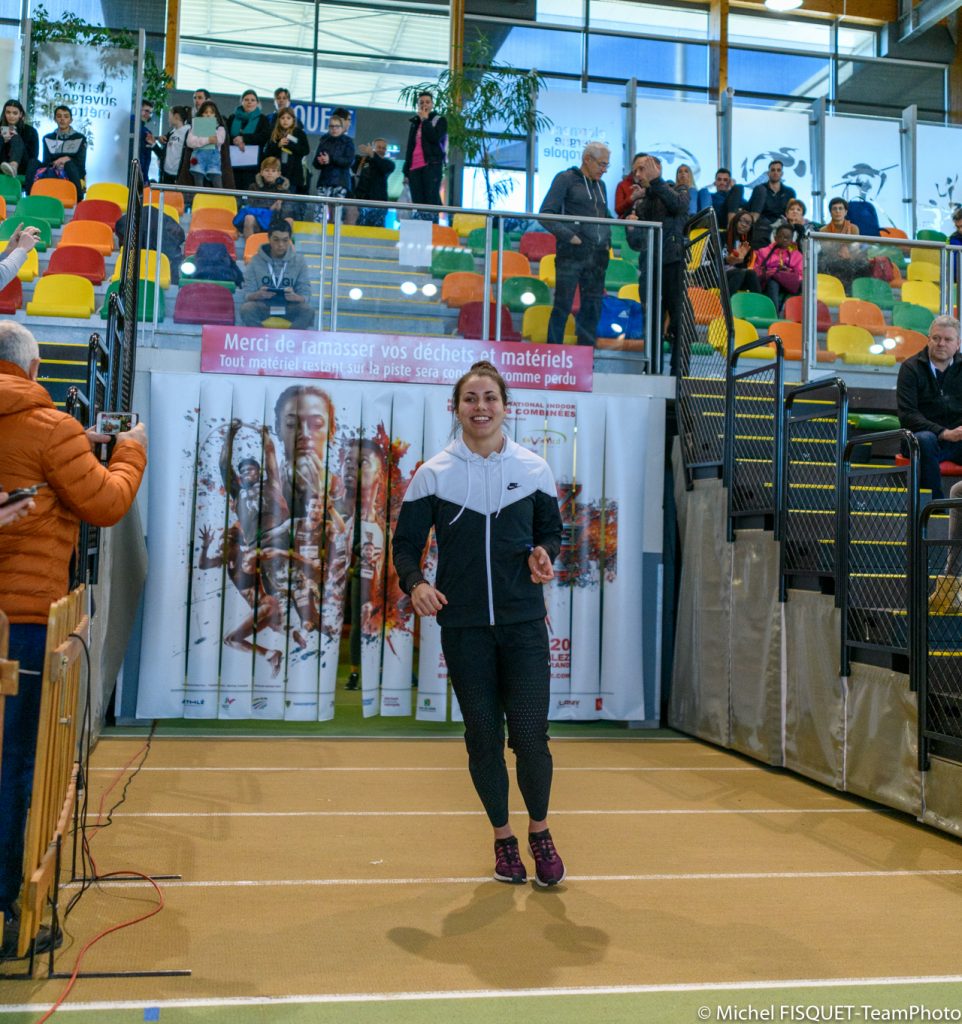
After the enforced absence from competition, her first outdoor meeting in 2020 was in a much grander location, at the King Baudouin Stadium, home of the Brussels Grand Prix, on 9 August. In that competition Cassandre competed in 3 of her decathlon events, the 100m, discus and javelin, setting a discus PB of 37.75m in the process. And at the Belgian championships on 16 August, she became the national javelin champion with a throw of 44.24 in the final round, just 32cm short of her lifetime best.
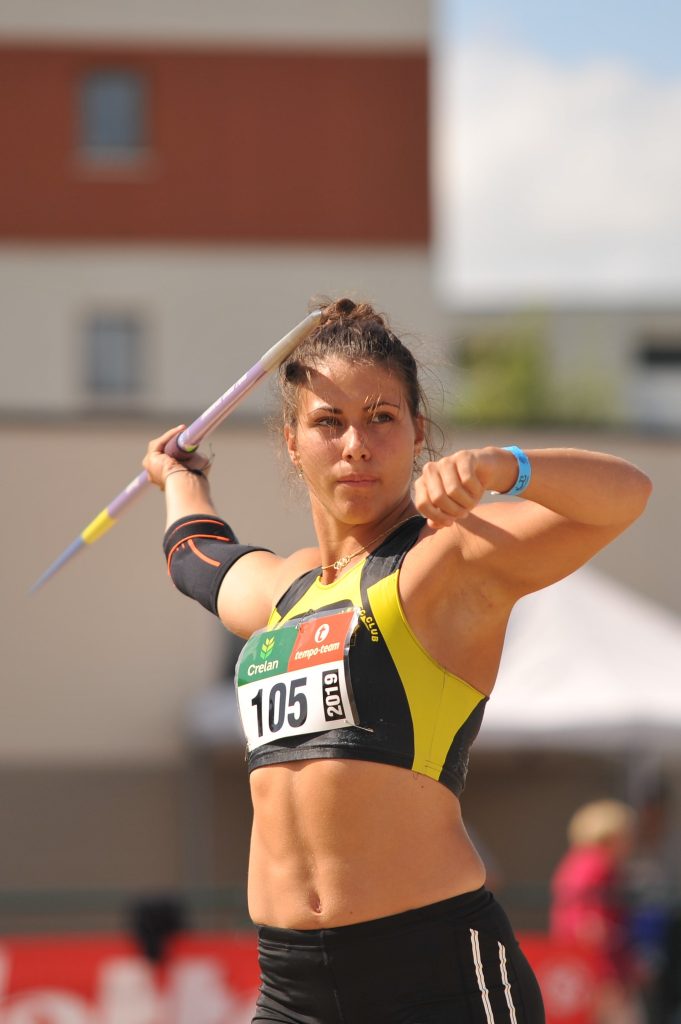
Cassandre’s senior national title in the javelin follows a suite of medals over the years at U20, U18 and U16 level, both in combined events and in individual events, mostly the javelin and long jump. The groundwork for her success in multiple events – and the multi-events – was set as a youngster, when she did a range of sports including karate and gymnastics. Her mother encouraged her to try athletics, and so she entered a competition at the local track club.
“I liked it, so I continued!” Cassandre explains, simply. “When we were young, we did everything. I was good in a number of different events, so we decided to continue with combined events.”
“From the beginning,” Vincent recalls, “It was clear that Cassandre was talented at the strength events, including discus. So, it was a natural and logical process to try decathlon. In her training group, she is the oldest, but she is also the leader.”
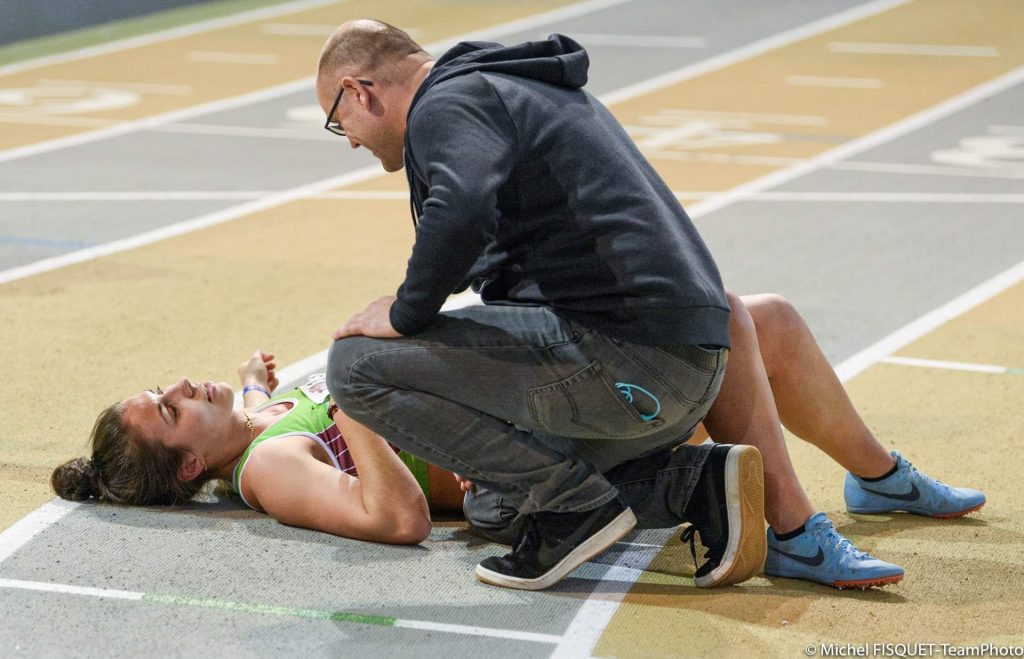
A dilemma shared by female decathletes is the right balance of training between decathlon and heptathlon. Training for decathlon-specific events (i.e. discus and pole vault) with little prospect of the opportunity to put them together in a decathlon, or training for the events required for heptathlon, where the competition at seven events is plentiful.
“We talked at the beginning of the season about how much we would prepare for the decathlon and the heptathlon,” explains Vincent. “In 2019 it was 90% heptathlon, 10% heptathlon. In 2020, we are focusing more on the decathlon – 80% to 20%”.
“Vincent and I have been talking about decathlon for a long time” says Cassandre. “’I’ve been doing athletics since 2011 competing in almost all disciplines of our sport over the years and, of course, doing a lot of combined events.”
“With all my PBs, my ideal total is 7138pts. There is no U20 world record yet, and World Athletics expects 7300 before they will ratify a record. That’s quite a big step but I like to say: “Dreams without goals are just dreams”.
In track and field, the athlete voices who can effect the greatest change are usually those at the peak of their careers, with world records or World or Olympic titles to their name. Those who, as a side-product of their accomplishments on the track or field, have reached a level of recognition and influence that enables them to leverage change to benefit the sport. For female decathletes, it is a little more complex, trying to effect change from the side lines. The men’s decathlon world record holder, Kevin Mayer, is an ally and has spoken out in support of decathlon for women. But it is hard to promote change when there are few platforms on which to do so, and even harder to do it while still in the early stages of your career.
But Cassandre has embraced her role as a leader. “My ambition as a young decathlete is to promote the discipline and to change minds. To finally make women’s decathlon an official event.”

Her leadership was recognised by “Les Grenades”, the feminist platform of Belgian public service broadcaster RTB, as Cassandre was named as one of their 50 women of the year in 2019, for her efforts in breaking new ground.
Like Jordan Gray, Cassandre is pragmatic about the practical steps that could be taken to introduce decathlon while – even at the age of 18 – appreciating that the change may not come within her career.
“Maybe we can keep the heptathlon, at least as a transition,” she sets out, “but we have to install the decathlon now. The decathlon is the complete discipline. Why should women accept competing only in the less demanding of the combined events? In a decathlon, each athlete can find events to express their strengths. In the heptathlon, that is not possible. It is way too focused on speed and jumps.”
“By competing in more decathlons, I hope to demonstrate that women are ready. Maybe I can also inspire even younger girls and, together, we can make our dreams come true. I want to use all tools at my disposal to show the world that women are waiting for change. I want to help educate and engage the public in this battle.”
“We can do it too. Decathlon is for everybody.”
Photos: courtesy of Vincent Delcros/Huy Athletic Club and Michel Fisquet.
